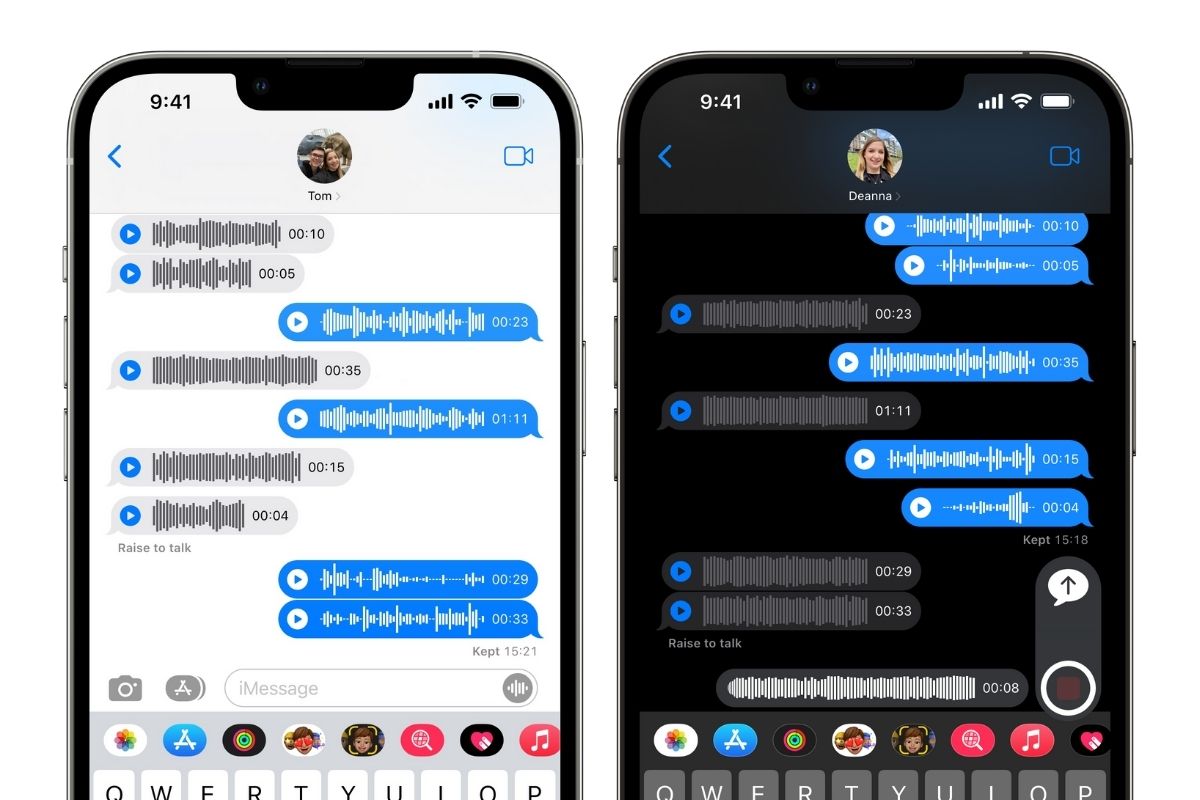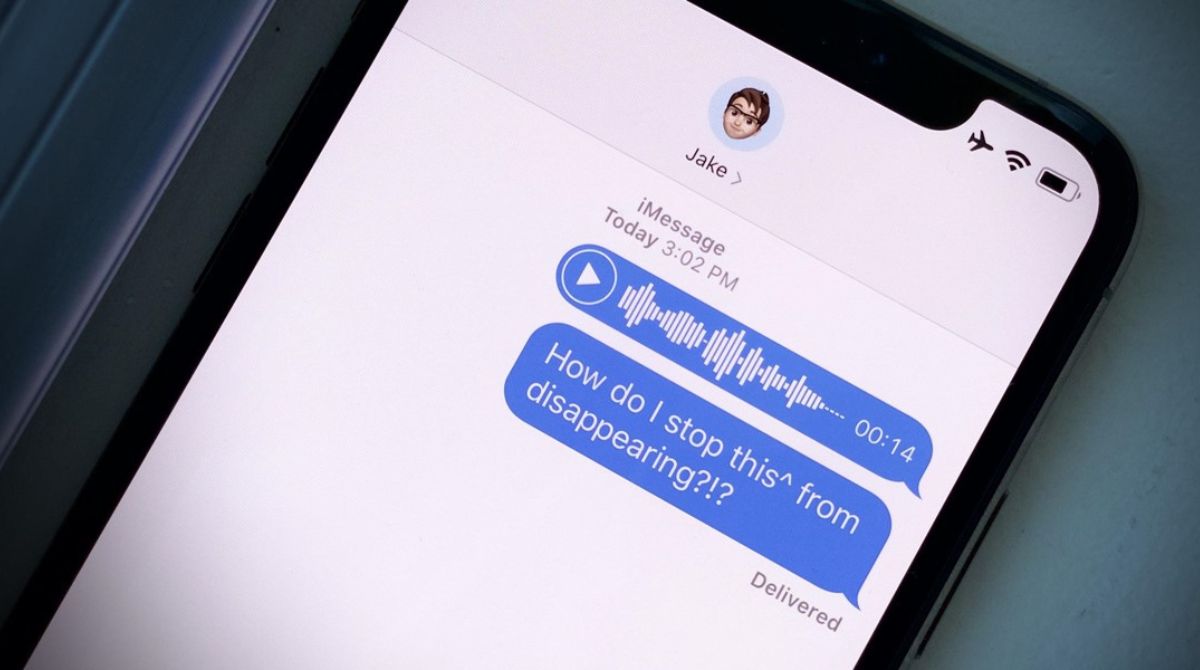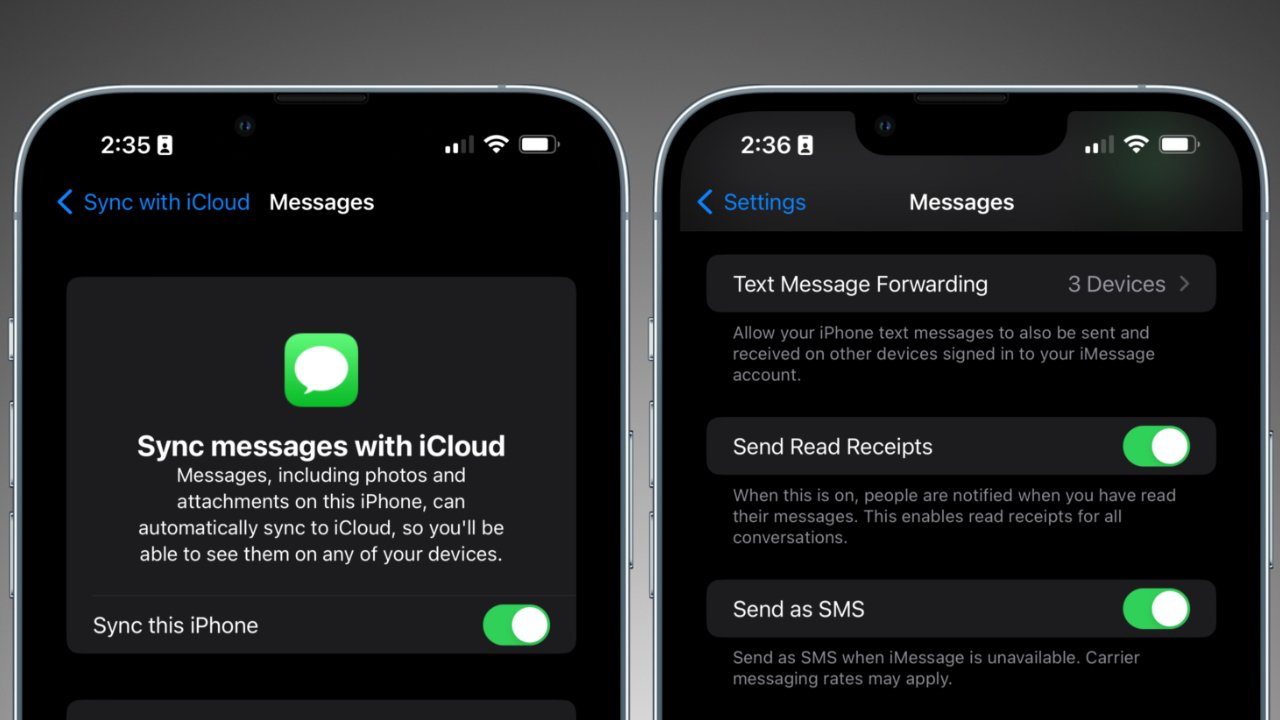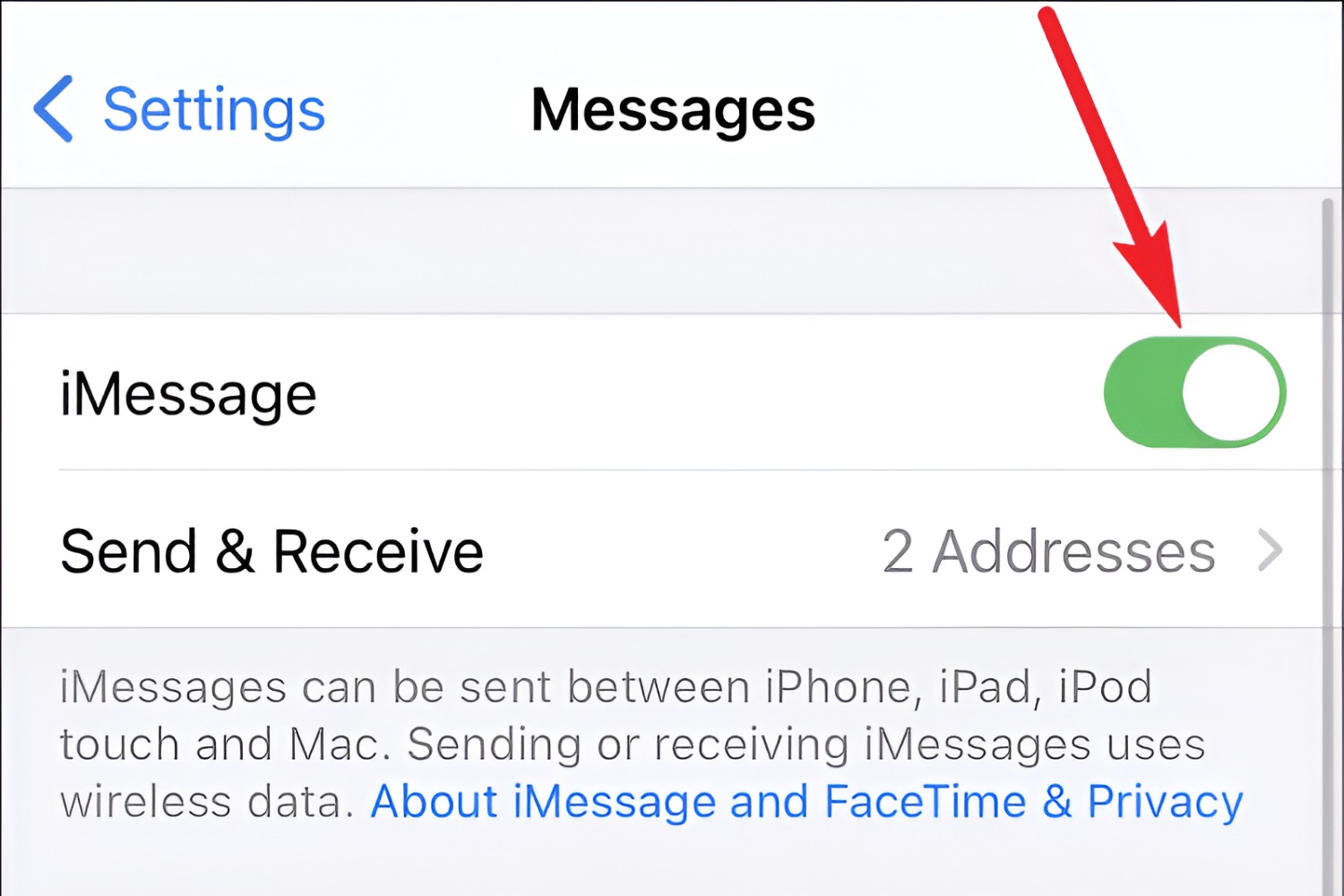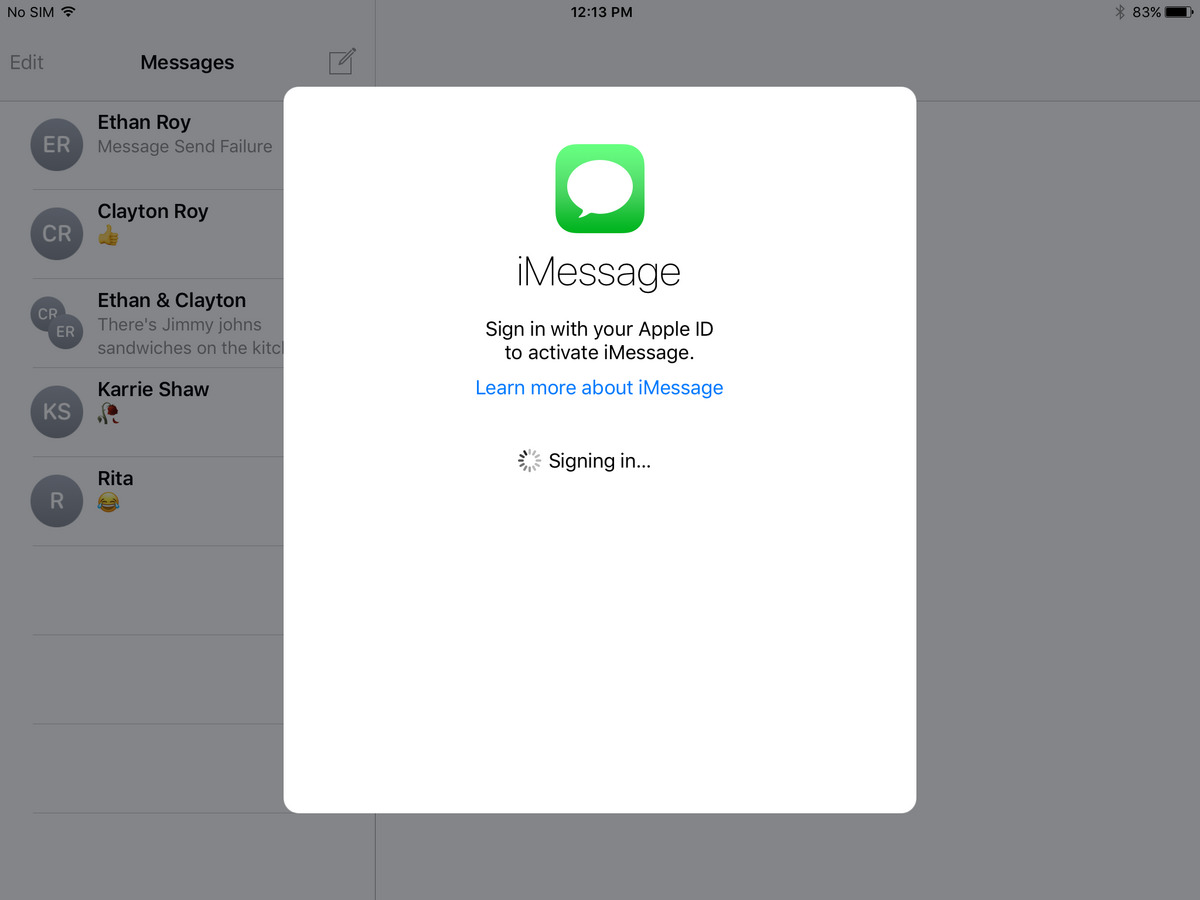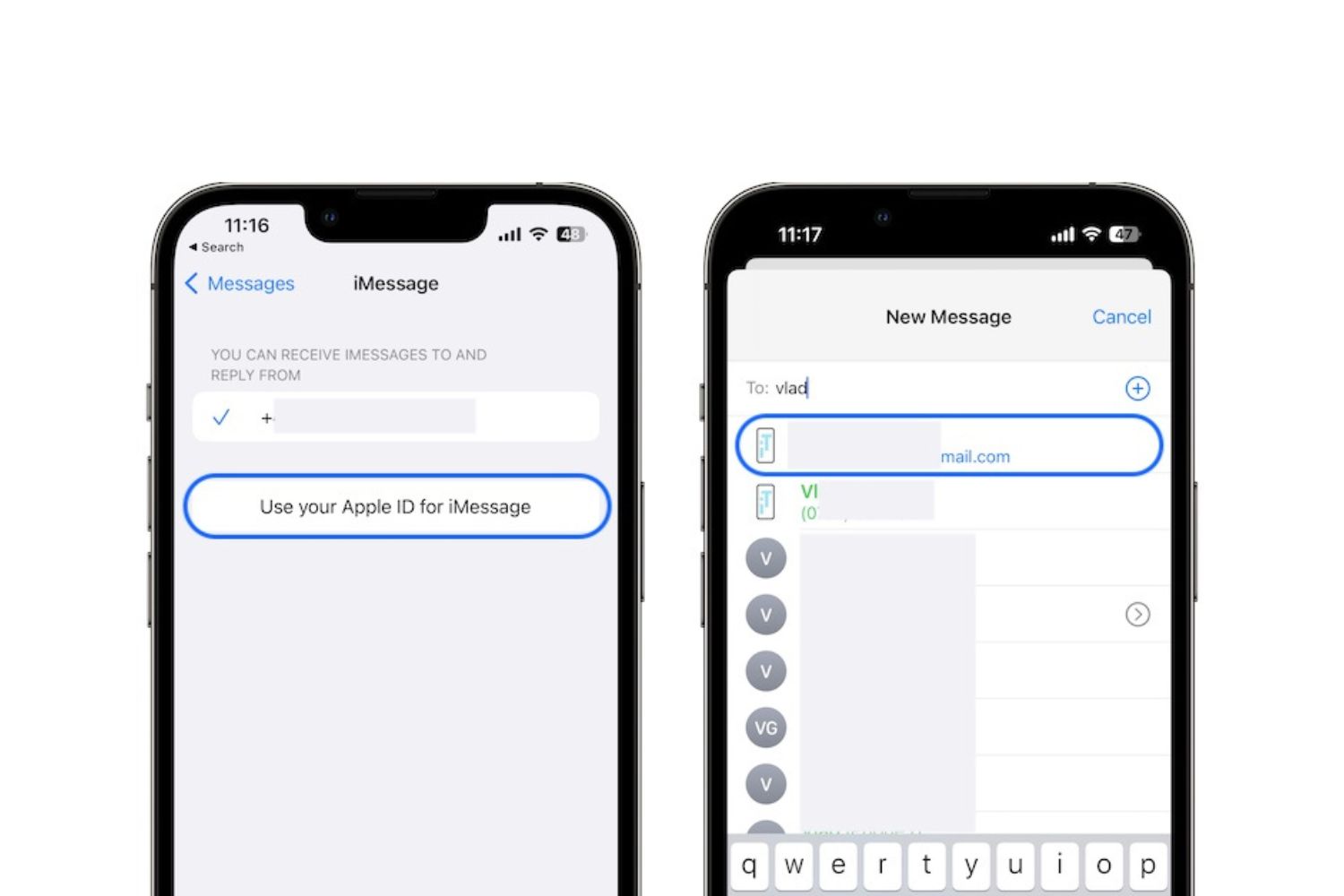Introduction
Many people rely on instant messaging services like iMessage for quick and convenient communication. One of the features that sets iMessage apart is the ability to send and receive voice messages, allowing for a more personal and expressive form of communication. If you’re new to using iMessage or simply haven’t explored this feature yet, you may be wondering how to find voice messages on iMessage.
In this article, we will guide you through the step-by-step process of accessing and managing voice messages on iMessage. Whether you’re using an iPhone, iPad, or Mac, the process is relatively similar, with slight variations depending on the device and operating system you’re using.
Before we dive into the specifics, it’s worth noting that voice messages are different from voicemail messages. Voicemail messages are usually received and stored by your cellular network provider, while voice messages on iMessage are sent directly between iMessage users.
So, if you’re ready to start exploring the world of voice messages on iMessage, let’s get started!
Accessing iMessage
Before you can find and manage voice messages on iMessage, you need to ensure that you have access to the iMessage app on your device. iMessage is typically pre-installed on Apple devices, such as iPhones, iPads, and Mac computers. If you’re using an Apple device, chances are you already have iMessage installed.
To access iMessage, simply locate the iMessage app icon on your device’s home screen or app drawer. It’s usually represented by a speech bubble with three dots inside. Tap on the icon to open the iMessage app.
If you’re using a Mac computer, you can access iMessage through the Messages app, which is often pre-installed as well. Simply click on the Messages icon in your dock or use Spotlight search to find and open the app.
Once you have successfully opened iMessage, you will be ready to move on to the next step of finding your voice messages.
Opening a Conversation
To find and listen to voice messages on iMessage, you first need to open a conversation with the person who sent you the message. If you have an existing conversation with the person, simply locate their name or contact information in your iMessage contact list.
If you don’t have an existing conversation, you can start one by tapping on the compose icon, which is usually represented by a pencil or pen icon. This will open a new message window where you can enter the recipient’s name or phone number.
Once you have opened the conversation, you will be able to see the messages exchanged between you and the other person. It’s important to note that voice messages appear as special icons within the conversation, usually represented by a small microphone symbol.
Now that you have opened a conversation and can see the messages, it’s time to locate the voice message section and begin listening to your voice messages.
Navigating to the Voice Message Section
Once you have opened a conversation in iMessage, locating the voice message section is relatively simple. The voice messages are usually displayed as a separate section within the conversation, distinct from regular text messages.
To navigate to the voice message section, look for an icon or button that represents voice messages. On most devices, this icon resembles a small microphone or play button. It may be located at the bottom of the conversation window, either on the left or right side.
Tap on the voice message icon or button to access the voice message section. This will open a new screen or overlay that displays all the voice messages exchanged between you and the other person in the conversation.
In some cases, you may need to swipe left or right within the conversation window to reveal the voice message section. On certain devices, such as iPhones with a compact screen size, the voice message section may be hidden by default to prioritize the display of text messages.
Once you have successfully navigated to the voice message section, you’re just a few taps away from playing and managing your voice messages.
Playing a Voice Message
After you have accessed the voice message section within the conversation, you can start playing the voice messages that have been sent to you. Each voice message is represented by a separate audio file that you can listen to.
To play a voice message, simply tap on the desired message. This will initiate the playback of the audio file, and you’ll be able to hear the voice message through your device’s speakers or connected headphones.
While playing a voice message, you will see a progress bar that indicates the duration of the message. You can pause and resume playback by tapping on the message again or by using the designated playback controls provided on the screen.
If you receive multiple voice messages in a row, you can play them sequentially by tapping on each message, or you can swipe between messages to move back and forth within the voice message section.
Remember to adjust the volume on your device to a suitable level so that you can hear the voice message clearly. You can adjust the volume using the volume buttons on your device or through the volume control settings.
Now that you know how to play a voice message, let’s move on to the next section to learn how to save a voice message for future reference.
Saving a Voice Message
If you come across a voice message that you want to save for future reference or keep as a memento, iMessage provides an option to save voice messages directly to your device.
To save a voice message, follow these steps:
- While playing the voice message, look for a designated “Save” button or icon. This button is usually represented by a download symbol or a floppy disk icon.
- Tap on the “Save” button to initiate the saving process. The voice message will be downloaded and saved to your device’s storage.
- Once the voice message is saved, it will be accessible for playback even if the original message is deleted from the conversation.
It’s worth noting that the exact steps for saving a voice message may vary slightly depending on the device and operating system you’re using. However, the general process remains consistent across most Apple devices.
By saving voice messages, you can create a digital collection of important or memorable messages that you can listen to anytime, even when offline. This feature is particularly useful for preserving sentimental messages or capturing important information shared through voice messages.
If you want to locate and manage your saved voice messages, they are typically stored within the iMessage app or the Messages app on your device, in a dedicated section for saved media files.
Now that you know how to save a voice message, let’s proceed to the next section to learn how to delete unwanted voice messages from your conversations.
Deleting a Voice Message
If you have voice messages in your iMessage conversations that you no longer need or want to keep, you have the option to delete them. Deleting a voice message will permanently remove it from the conversation and free up storage space on your device.
To delete a voice message, follow these steps:
- Open the conversation that contains the voice message you want to delete.
- Locate the voice message within the voice message section of the conversation.
- Long press on the voice message to access a set of options or a context menu.
- Look for the designated “Delete” option or trash bin icon.
- Tap on the “Delete” option or icon to confirm the deletion of the voice message.
After confirming the deletion, the voice message will be permanently removed from the conversation and cannot be recovered. However, it’s important to note that deleting a voice message only removes it from your device and the conversation; it does not delete the message from the sender’s device.
If you accidentally delete a voice message and want to retrieve it, you will need to ask the sender to resend the message.
It’s good practice to delete unnecessary voice messages periodically to keep your conversations organized and optimize storage space on your device.
Now that you know how to delete a voice message, let’s explore how to forward voice messages to other contacts or conversations on iMessage.
Forwarding a Voice Message
If you receive a voice message in iMessage that you want to share with another contact or conversation, you can easily forward it. The forwarding feature allows you to send the voice message to someone else without having to re-record or re-upload the audio file.
To forward a voice message, follow these steps:
- Open the conversation containing the voice message you want to forward.
- Locate the voice message within the voice message section of the conversation.
- Long press on the voice message to access a set of options or a context menu.
- Look for the designated “Forward” option or arrow icon pointing to the right.
- Tap on the “Forward” option or icon to proceed with forwarding the voice message.
- Select the contact or conversation you want to forward the voice message to from your contacts list or recent conversations.
- Confirm the forwarding action, and the voice message will be sent to the chosen recipient.
It’s important to note that when you forward a voice message, it will be sent as a separate audio file within the new conversation. The original voice message in the previous conversation will remain intact.
By utilizing the forwarding feature, you can easily share important or entertaining voice messages with others, allowing them to listen and enjoy the message without any hassle.
Now that you know how to forward a voice message, let’s address some common issues that you may encounter while using voice messages on iMessage.
Troubleshooting Common Issues
While using voice messages on iMessage, you may come across some common issues or difficulties. Here are a few troubleshooting tips to help you overcome them:
- No sound or low volume: If you’re experiencing issues with the sound while playing a voice message, check the volume settings on your device. Ensure that the volume is turned up and not muted or set to a low level.
- Unable to find the voice message section: If you’re having trouble locating the voice message section within the conversation, try swiping left or right within the conversation window to reveal hidden sections. Additionally, make sure that you’re using the latest version of iMessage, as older versions may not have the voice message feature.
- Errors while saving or forwarding voice messages: If you encounter errors while saving or forwarding voice messages, ensure that you have sufficient storage space on your device. Clearing up storage or deleting unnecessary files can help resolve these issues. Also, restarting your device or updating to the latest software version may help fix any bugs or glitches.
- Compatibility issues: Sometimes, voice messages may not play properly when sent between different devices or operating systems. If you’re experiencing compatibility issues, try updating the software on your device or ask the sender to resend the voice message in a different format.
- Network or connectivity problems: Voice messages require a stable internet connection to be sent and received. If you’re having trouble sending or receiving voice messages, check your internet connection and try switching between Wi-Fi and cellular data to see if the issue is resolved.
If you continue to experience difficulties with voice messages on iMessage, you can visit the Apple Support website or seek assistance from Apple customer support for further assistance.
With these troubleshooting tips, you’ll be better equipped to overcome common issues and enjoy a seamless experience with voice messages on iMessage.
Conclusion
iMessage provides a convenient and enjoyable way to communicate with others using voice messages. By following the steps outlined in this article, you can easily find, play, save, delete, and forward voice messages within your iMessage conversations.
Remember that accessing iMessage is the first step, followed by opening a conversation to locate and navigate to the voice message section. Once in the voice message section, you can play the messages, save them for future reference, delete unwanted ones, and even forward them to others.
If you encounter any issues, try troubleshooting common problems such as low volume, difficulty finding the voice message section, errors while saving or forwarding, compatibility issues, or network connectivity problems.
Now that you have a comprehensive understanding of how to manage voice messages on iMessage, you can fully embrace this feature and enjoy a more expressive and personalized form of communication.
So go ahead and start exploring the world of voice messages on iMessage today!







